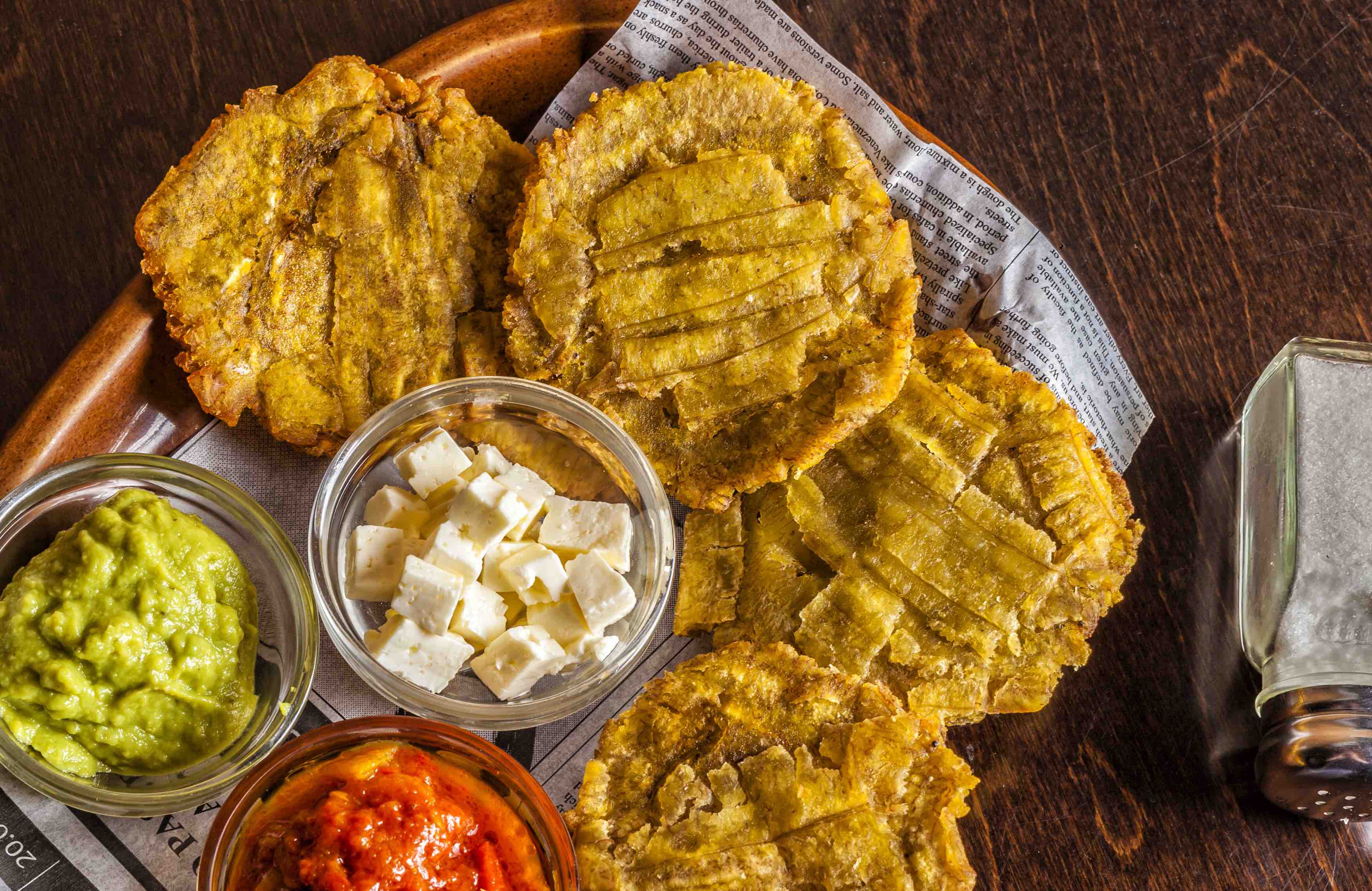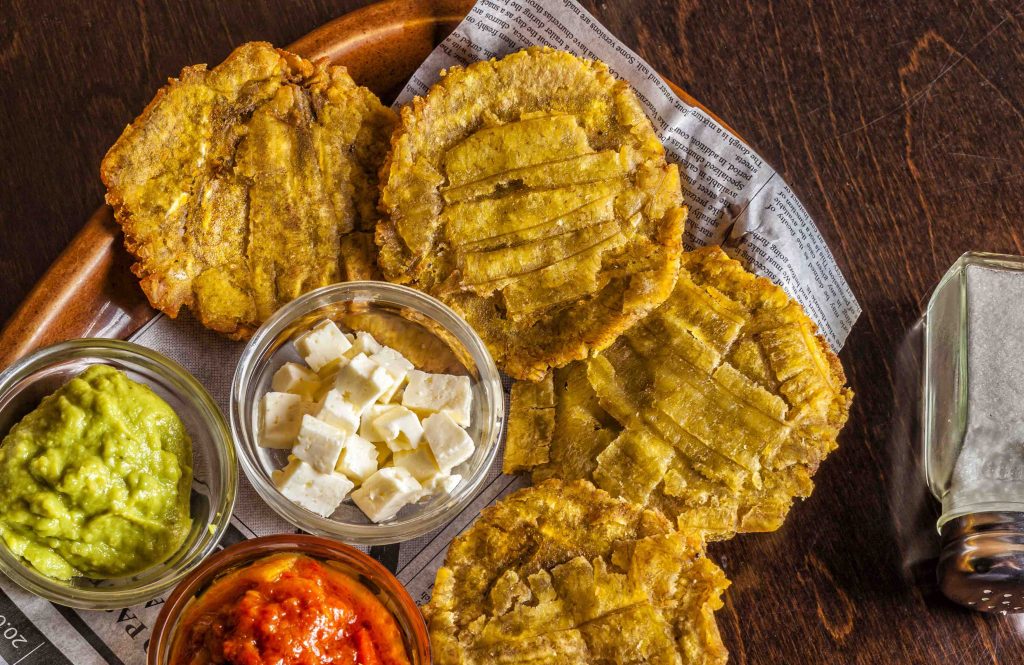Plátanos are an essential food group for Latinos, but it seems we’ll never agree on whether maduros or verdes are superior. (The correct answer is that they’re both amazing, and you don’t have to pick.) Maduros are the sweet, soft iteration of plátanos, while green plantains offer a savory taste, commonly served in the form of tostones. But plátanos verdes are just as versatile as a ripe plantain.
RELATED: 7 Dishes That Prove Plátanos Maduros Are the Most Versatile Food Out There
Typically fried, plátanos verdes come in many different styles. Caribbeans, for example, prepare mofongo by smashing chunks of fried plátanos into a mound filled with meat, chicken, or seafood.
While there’s nothing wrong with tostones, if you’re looking to step out of your comfort zone, check out 10 dishes made with plátano verde and fall in love with plantains all over again.
1
Arañitas
Arañitas are the not-so distant cousin of the tostón. The plátano is grated into tiny slices that are later put together in small mounds. The skinny stems make the treat look like a spider, hence the name arañitas. While you can enjoy them with salt, some use hot sauce or mayo ketchup as a dip.
2
Mofongo
While many plátano verde recipes are considered sides, mofongo is hearty enough to be the main star. The plátanos are fried in chunks and later smashed in a maceta along with olive oil and butter. The mofongo can be eaten by itself or filled with beef, chicken, or shrimp.
3
Bolón de verde
In Ecuador, bolón de verde is a popular plátano verde treat filled with cheese and bacon. The plátano is fried and smashed to create a small ball that’s typically eaten during breakfast. Many compare this recipe to mofongo or Peruvian tacachos.
4
Platanutres
Platanutres (which go by different names across Latin America) are a plantain chip typically sold as a snack at vending machines. But platanutres can be easily made at home and are served across Latin America as a side or appetizer. Just like tostones, platanutres are fried with cooking oil and later dusted with salt.
5
Tajadas
Tajadas – which in some areas can also refer to long, oblong shaped sweet plantains – are similar to platanutres, except these are usually served in restaurants. They are made by cutting plátanos verdes into long, thin slices that are then fried.
6
Patacón
The patacón hails from Venezuela. This delicious dish takes two tostones to create a sandwich, replacing the buns with plátano. While the patacón sandwich is its most delicious iteration, the term is also used to describe simple tostones in some parts of Latin America.
7
Mangú
Dominican breakfast is not complete without some mangú, salami, and fried eggs. Unlike mofongo, mangú is made from boiled plátanos that are later smashed and sauteed with onions.
8
Croquetas de plátano y queso
Croquetas hail from Spain, but this plátano iteration is uniquely Latin American. The plátano is cooked for about 40 minutes and later turned into dough. The croquetas are filled with mozzarella cheese and fried until golden.
9
Arepas de plátano verde
While arepas are a sweet treat loved loved by Latin Americans, its plátano version is a savory alternative to the same delicious recipe. The regular arepa dough is mixed with crushed plátano verde and fried in a pan.
10
Tostones
It’s impossible to leave tostones out of the equation. The traditional plantain treat is prepared by cutting the plátano chunks and frying them until golden. The plátano is then smashed with an instrument called tostonera and later fried again until it reaches a crispy texture. While most people enjoy them with just salt, others add garlic or dip them in mayo ketchup.




